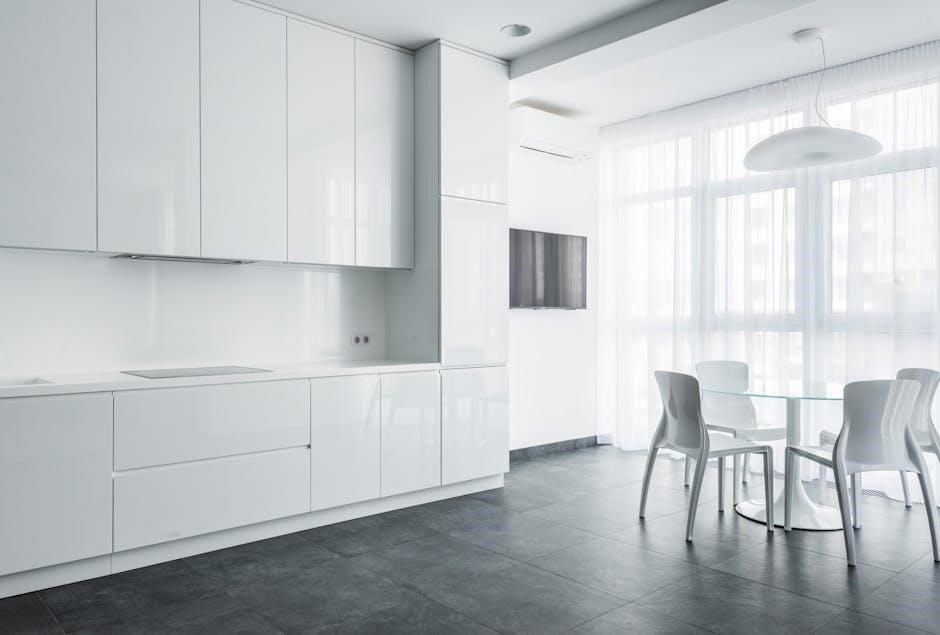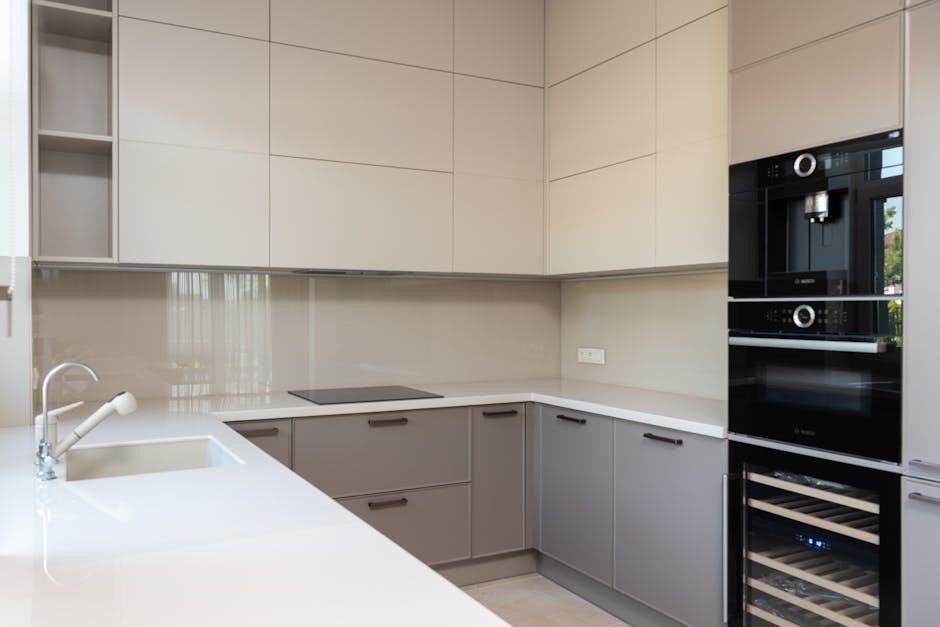ge double oven self-clean instructions
GE double oven self-clean instructions provide guidance on using the self-cleaning feature, ensuring a safe and effective cleaning process for your oven, with proper ventilation and maintenance being key factors always considered carefully online.
Overview of the Self-Cleaning Process
The self-cleaning process for GE double ovens involves a high-heat cycle that burns away food residue and grime, leaving a residue that can be easily wiped away. This process is designed to be efficient and effective, saving time and effort. The special enamel coating on the oven surfaces helps to make the cleaning process easier. According to the manufacturer’s instructions, the self-cleaning cycle should be used with caution and only when necessary. It is also important to follow the recommended guidelines for ventilation and maintenance to ensure the longevity of the oven. The self-cleaning process typically takes several hours to complete, depending on the level of soil and the type of oven. By following the correct procedures and guidelines, users can ensure a safe and successful self-cleaning experience for their GE double oven. Proper use of the self-cleaning feature can help maintain the oven’s performance and appearance over time.

Preparation for the Self-Cleaning Cycle
Remove racks and shelves before starting the self-cleaning cycle to prevent damage and ensure proper cleaning always occurs with careful preparation and attention to detail online every time.
Importance of Ventilation
Proper ventilation is crucial when using the self-cleaning feature on your GE double oven, as it helps to remove harmful fumes and particles from the air.
The self-cleaning cycle can release strong odors and toxic fumes, so it’s essential to provide good ventilation in the kitchen to prevent inhalation;
This can be achieved by opening windows, using a ventilation fan or hood, or turning on the exhaust fan above the oven.
According to the GE manual, venting the kitchen is highly recommended before and during the self-cleaning cycle to ensure a safe and effective cleaning process.
By following these guidelines, you can help to minimize the risks associated with self-cleaning and keep your kitchen safe and clean.
Additionally, proper ventilation can also help to reduce the amount of dust and debris that settles on surfaces after the self-cleaning cycle, making it easier to clean up afterwards.
Overall, ventilation plays a critical role in the self-cleaning process, and it’s essential to take the necessary precautions to ensure a safe and successful cleaning experience.
The importance of ventilation cannot be overstated, and it’s a critical step in the self-cleaning process that should never be overlooked.
By prioritizing ventilation, you can help to protect yourself, your family, and your kitchen from the potential hazards associated with self-cleaning.

Operating the Self-Cleaning Cycle
Follow the owner’s manual to operate the self-cleaning cycle correctly, ensuring all controls are set and the oven door is closed securely always online.
Setting the Controls Correctly
To ensure a successful self-cleaning cycle, it is crucial to set the controls correctly, as specified in the owner’s manual. The GE double oven self-clean instructions typically involve selecting the self-clean option and choosing the desired cleaning time. The oven will then heat up to a high temperature, usually around 900 degrees Fahrenheit, to burn off food residue and grime. It is essential to follow the manufacturer’s instructions carefully to avoid any errors or damage to the oven. The controls should be set to the self-clean mode, and the oven door should be closed and locked to prevent any accidents. Additionally, the oven should be empty, and any racks or shelves should be removed before starting the self-cleaning cycle. By setting the controls correctly, you can ensure a safe and effective cleaning process for your GE double oven. Proper control setting is vital for optimal results.

Maintenance and Frequency of Cleaning
Regular maintenance and cleaning every one to three months is necessary for optimal performance and longevity of the GE double oven, ensuring efficiency and safety always online.
Recommended Cleaning Schedule
A recommended cleaning schedule for the GE double oven is to run the self-cleaning cycle every 3 to 6 months, depending on usage. This helps to remove tough food residue and grime that can accumulate over time. Additionally, it is a good idea to wipe down the oven surfaces after each use to prevent food splatters and spills from becoming stubborn stains. The oven racks should also be cleaned regularly, either by hand or in the dishwasher, to prevent the buildup of grease and food particles. By following a regular cleaning schedule, you can help to maintain the performance and appearance of your GE double oven, and ensure that it continues to function safely and efficiently. Regular cleaning can also help to prevent the need for more frequent and intense cleaning cycles, which can be time-consuming and energy-intensive. A clean oven is a happy oven, and with a little maintenance, you can enjoy years of trouble-free cooking and baking.

Alternative Cleaning Methods
Using oven cleaning chemicals or steam cleaning are alternative methods for cleaning your GE double oven, providing effective results without the self-cleaning cycle, always following manufacturer instructions carefully online.
Using Oven Cleaning Chemicals
When using oven cleaning chemicals, it is essential to follow the manufacturer’s instructions carefully to ensure safe and effective cleaning. The chemicals can be applied to the interior of the oven, and then wiped clean with a damp cloth. It is crucial to wear protective gloves and eyewear when handling these chemicals. The internet provides various resources and guidelines for using oven cleaning chemicals, including safety precautions and recommended application methods. Some chemicals are specifically designed for self-cleaning ovens, while others can be used on various types of ovens. It is also important to consider the type of oven surface being cleaned, as some chemicals may not be suitable for certain materials. By following the instructions and taking necessary precautions, oven cleaning chemicals can be a useful alternative to the self-cleaning cycle, providing a convenient and effective way to clean the oven. Regular cleaning can help maintain the oven’s performance and appearance.
